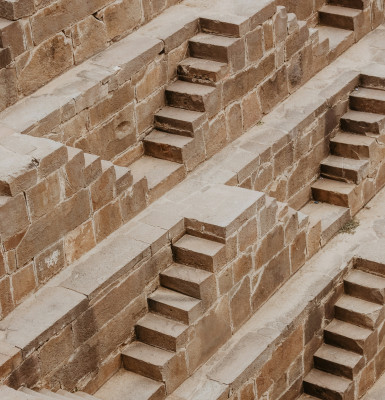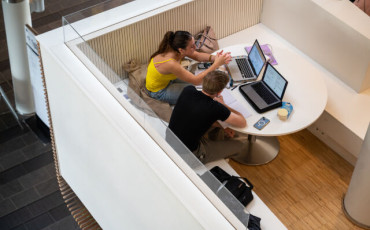Deze maand: Aanbevelingen voor een effectief ontwerp van blended learning om studentprestaties te verhogen en het psychosociaal welzijn te verbeteren.
Theelen, H., De Smet, M., Van Breukelen, D., Eeckhoudt, L., Van Gucht, D., Adriaens, K., & Vanhees, C. (2024). Navigating the Landscape of Blended Higher Education: Didactical Design Principles for Students’ Broad Development. IntechOpen. http://dx.doi.org/10.5772/intechopen.114154
Bianca van der Aalst heeft dit artikel voor je geselcteerd. Zij is Blended Learning Coach bij Fontys Hogeschool en voorzitter van de SURF SIG Blended Learning.
Wat je in dit artikel leest
In dit artikel lees je het resultaat van twee uitgebreide, onafhankelijk uitgevoerde literatuurstudies. De eerste richtte zich op didactische strategieën, methodes en technieken voor online onderwijs. De tweede literatuurstudie focuste op het effect van verschillende blended onderwijs formats in vergelijking met face-to-face onderwijs. Hierbij werd met name gekeken naar de leeruitkomsten en psychosociale resultaten. Op basis hiervan doen de auteurs aanbevelingen voor een effectief ontwerp van blended onderwijs met als doel studentprestaties en psychosociaal welzijn te verbeteren. Deze aanbevelingen hebben betrekking op vijf thema’s. Het eerste thema is voorwaarden en daarna volgen vier didactische thema’s: authenthiek leren, opbouw m.b.t. inhoud en proces, peer-to-peer leren en formatieve strategieën.
Waarom we dit artikel hebben geselecteerd
De vraag naar een standaardrecept voor een effectieve blend wordt vaak gesteld, maar er is geen perfect format voor een blend die je overal toe kunt passen. Dit onderzoek kan je echter wel helpen om effectief blended onderwijs te ontwerpen op basis van wetenschappelijk onderbouwde ontwerpprincipes. Het zijn korte, praktische en helder geformuleerde principes, bondig toegelicht in het artikel. Deze principes kun je daarom goed als denkstap gebruiken in je ontwerpproces, of als checklist wanner je je concept onderwijsontwerp naloopt.
Hoe sluit dit aan op je onderwijspraktijk?
Zou je deze principes kunnen gebruiken in je ontwerpproces? Welke principes pas je nu al goed toe? Welke principes komen nog onvoldoende uit de verf in je onderwijsontwerp? Wat maakt dat je bepaalde principes minder goed toe kunt passen in jouw context/bij jouw doelgroep et cetera?
Kennis over blended learning opdoen
De Special Interest Group (SIG) Blended Learning en de Vraagbaak Online Onderwijs hebben de handen ineen geslagen. Elke maand selecteren deze twee SURF-communities speciaal voor jou een relevant wetenschappelijk artikel over blended learning dat interessant is om te lezen. We stellen je een prikkelende vraag en we stimuleren je om naar je onderwijs / omgeving te kijken en je kennis en ervaring te delen. We vinden het geweldig als je jouw antwoord hieronder of op LinkedIn met ons wil delen!
Eerdere verschenen in deze serie:
- Deel 1: Docentstrategieën voor betrokkenheid.
- Deel 2: Peerfeedback bij blended learning.
- Deel 3: De effectiviteit van blended learning meten.
- Deel 4: Gevoel van leren bij actief leren.
- Deel 5: Professionalisering bij blended learning.
- Deel 6: Blended learning als leermodel.
- Deel 7: Het belang van face-to-face onderwijs bij blended learning.
- Deel 8: Het TPACK-model als kader en ontwerpmodel.
- Deel 9: Het studentenperspectief op leren in een actieve en blended onderwijscontext.
- Deel 10: Gepersonaliseerd leren in blended leeromgevingen.
- Deel 11: Hoe studenten meer regie nemen in hun leerervaring.
- Deel 12: De rol van onderwijseigenschappen bij het voorspellen van academisch succes.
- Deel 13: Studiesucces verhogen met peer-learning zelfregulatiestrategieën.
- Deel 14: Blended Learning ontwerpprincipes voor onderwijs gericht op duurzaamheid.
- Deel 15: Flexibeler, toegankelijker onderwijs door minder on-campus en meer online tijd.
- Deel 16: Blended learning, strategische visie en behoeften van de onderwijspraktijk.
- Deel 17: Blended learning, Learning Analytics en formatief handelen.

The science behind Blended Learning | Part 18: Effective design of blended learning to increase student performance and improve well-being.
This month: Recommendations for effective design of blended learning to increase student performance and improve psychosocial well-being.
Theelen, H., De Smet, M., Van Breukelen, D., Eeckhoudt, L., Van Gucht, D., Adriaens, K., & Vanhees, C. (2024). Navigating the Landscape of Blended Higher Education: Didactical Design Principles for Students’ Broad Development. IntechOpen. http://dx.doi.org/10.5772/intechopen.114154
Bianca van der Aalst has selected this month's article. Bianca works as a Blended Learning Coach at Fontys University of Applied Sciences and is the chair of SURF's Special Interest Group Blended Learning .
What to expect in this article
This article presents the results of two extensive independently conducted literature studies. The first study focused on didactic strategies, methods and techniques related to online education. The second focused on the effect of different blended education formats compared to face-to-face education, concerning learning outcomes and psychosocial outcomes. Based on the literature reviews, the authors give recommendations for the effective design of blended learning with the aim of improving students' academic performance and psychosocial well-being. These recommendations cover five themes. The first theme covers prerequisites, followed by four didactic themes: authentic learning, structure regarding content and process, peer-to-peer learning and formative strategies.
Why we think this article is a must-read
In the field of education, a lot of people are searching for a standard recipe for an effective blend. But when it comes to effective blended learning, there is no 'one size fits all' approach you can apply everywhere. However, this research can help you design effective blended learning taking into account evidence-based design principles. The short, practical and clearly formulated principles are succinctly explained in the article. You can therefore use these principles as a thinking step in your design process, or as a checklist when reviewing your draft educational design.
How does this align with your teaching practice?
Could you use these principles in your design process? Which principles do you already apply? And which principles do not yet stand out enough in your educational design? What makes you less able to apply certain principles in your context/target group, et cetera?
Gaining more scientific knowledge on blended learning
SURF’s Special Interest Group (SIG) Blended Learning and Vraagbaak Online Onderwijs will be working together from now on. Each month they will provide you with a relevant article on blended learning and an inspiring question. Easy, accessible and up to date. We invite you to share your thoughts on the selected articles either here or on LinkedIn.
Previous articles in this series:
- Part 1: Strategies to foster student engagement
- Part 2: Peer feedback in a Blended Learning environment
- Part 3: Evaluating the effectiveness of blended learning.
- Part 4: Measuring actual learning versus feeling of learning.
- Part 5: Professional development for Blended Learning.
- Part 6: Blended learning as an instructional model in vocational education.
- Part 7: How face to face activities impact the effect of Blended Learning.
- Part 8: The TPACK and Multimodal model as framework for designing and implementing blended learning.
- Part 9: Student perspectives on learning experiences in a higher education active blended learning context.
- Part 10: Personalized learning in higher education settings.
- Part 11: How students take more direction in their learning experience.
- Part 12: Students matter the most in learning analytics. The effects of internal and instructional conditions in predicting academic success.
- Part 13: Increasing study success using peer-learning self-regulation strategies.
- Part 14: Developing Design Principles for Sustainability-Oriented Blended Learning in Higher Education.
- Part 15: Well-designed blended learning with half of the study time online, yields comparable learning outcomes to on-campus education.
- Part 16: Blended Learning, strategic vision, and needs of educational practice.
- Part 17: Supporting students’ basic psychological needs and satisfaction in a blended learning environment through learning analytics.



0 Praat mee